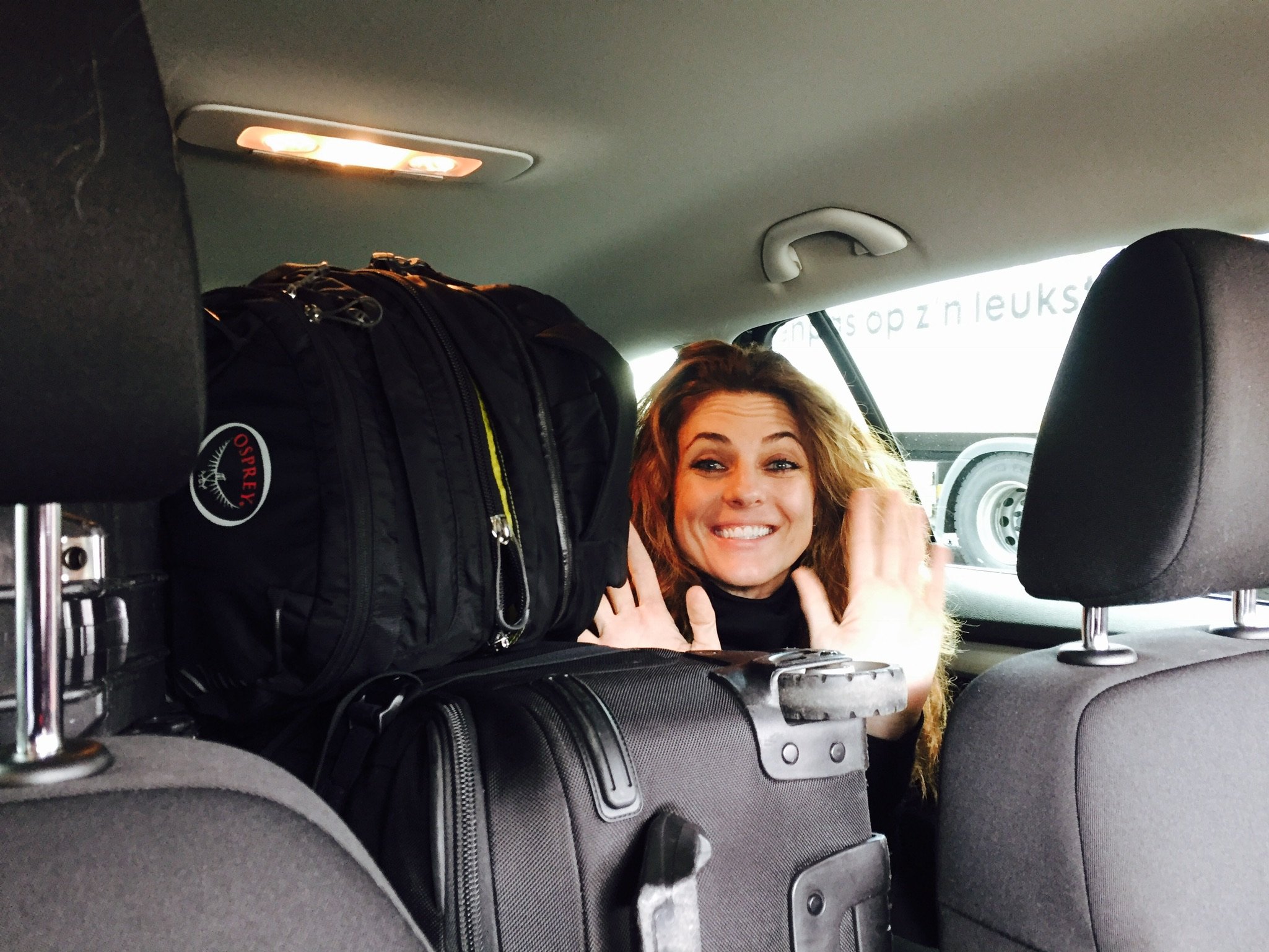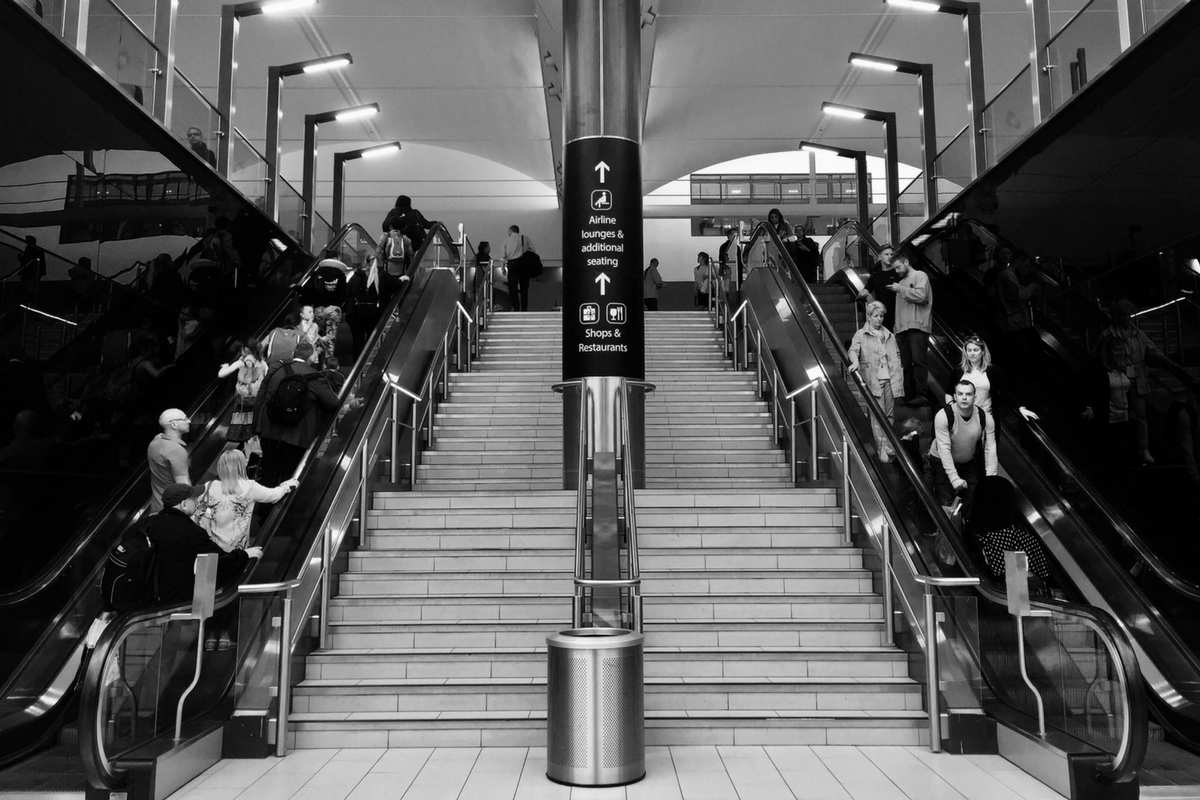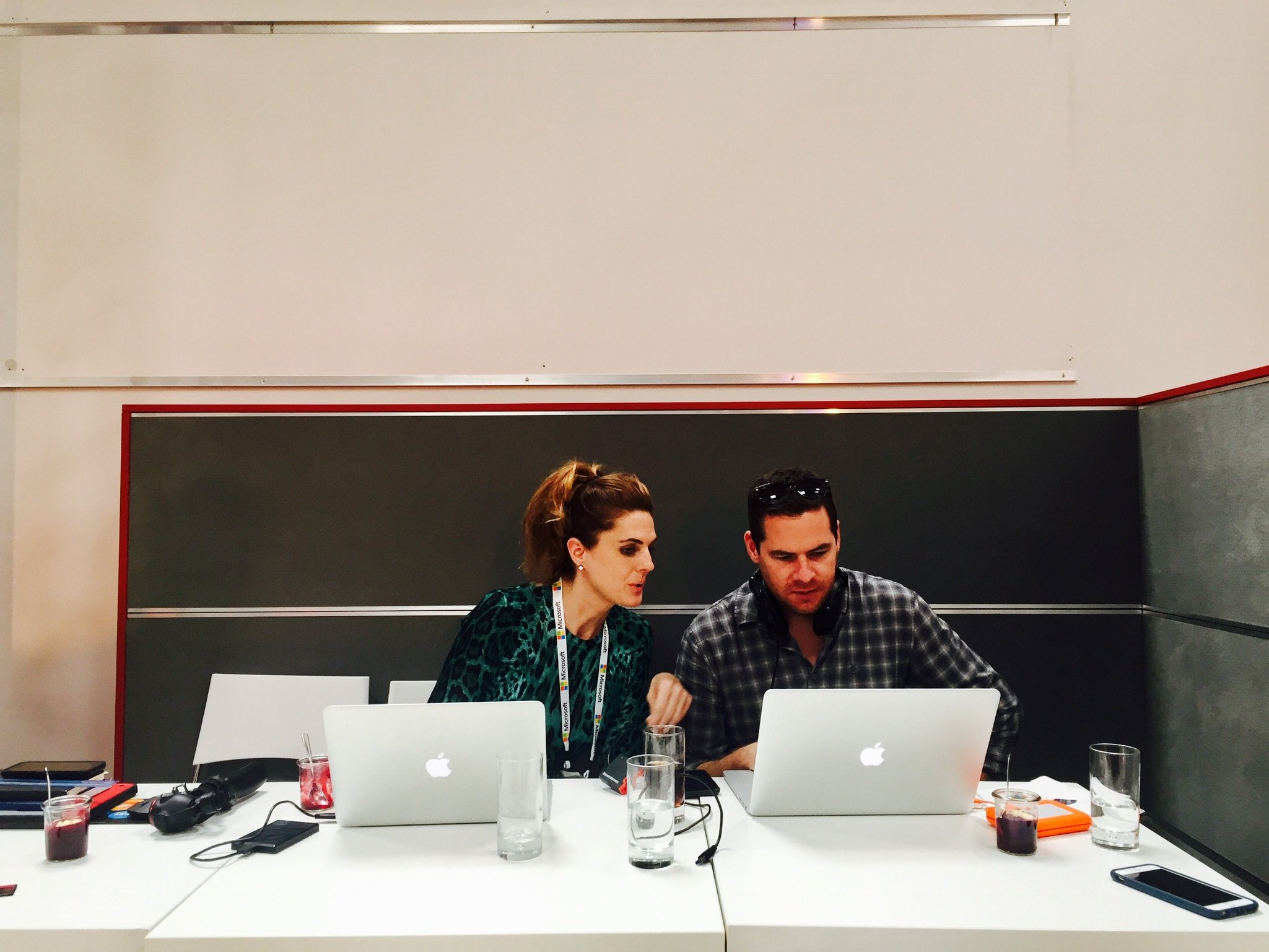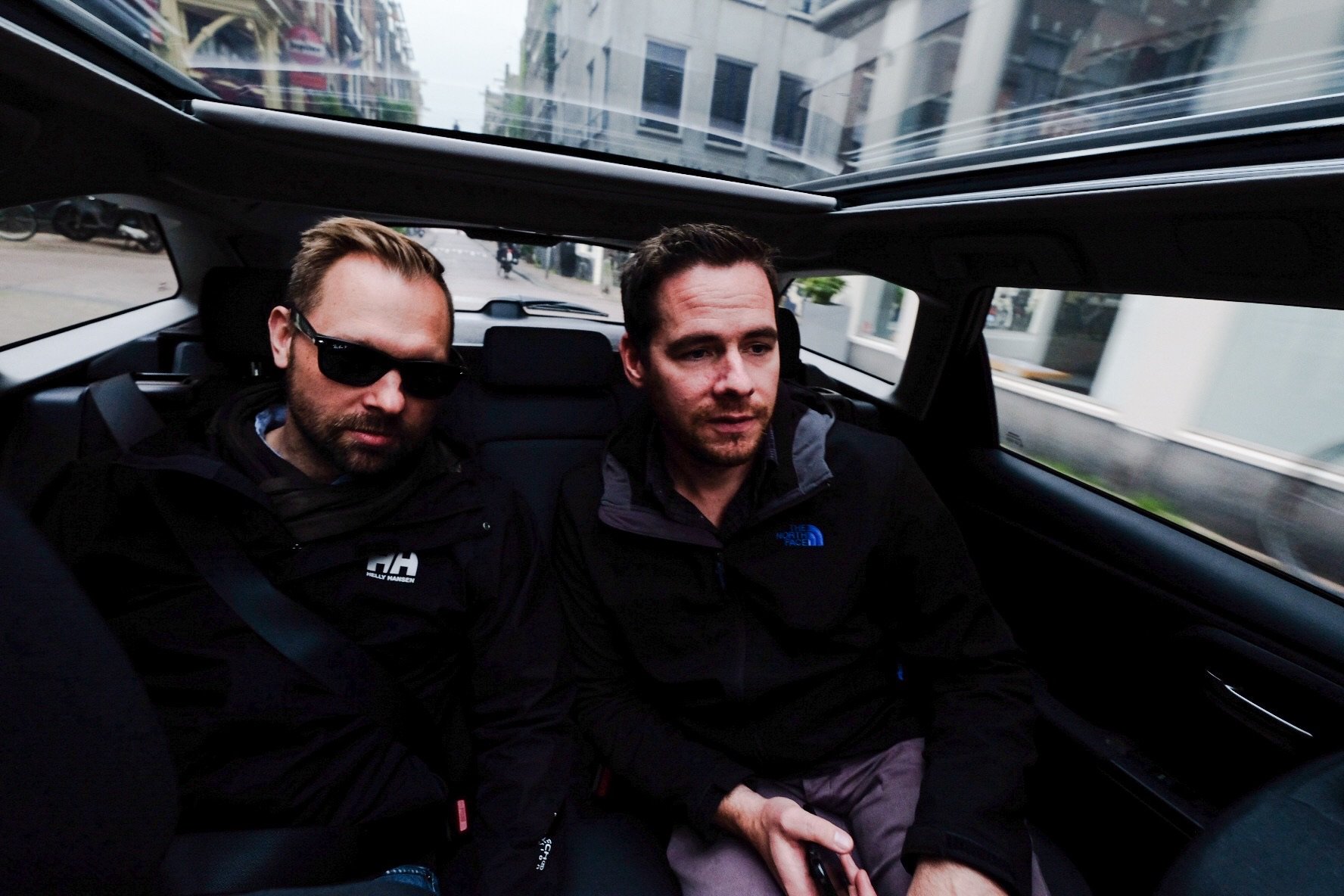The ELM team has had our fair share of on the road adventures, traveling from coast to coast for our clients. Most recently, Dave had the opportunity to partner with Jeff Christian and Sabra Gertsch, the founders of Side Road Media, to cover Microsoft at Hannover Messe 2017 in Germany – the world’s leading industrial show. The Side Road Media team is no stranger to shooting internationally. Prior to founding the production company, Jeff was a photojournalist for NBC News, where his work was showcased on NBC Nightly News with Lester Holt, The Today Show, MSNBC and Dateline. We asked him to share his top tips for shooting and producing on the road.

When he isn’t chasing stories and racking up air miles for upgrades to first class, Jeff is road tripping to the nearest Dave Matthews live music experience.
There was an old saying when I was at NBC in New York that if you left home without something, you’ll need it the second you land. To this day, I’ve lived by that rule on every shoot, every trip out of town, every job we take. Granted you won’t end up using 40 percent of what you bring, but the added security of knowing it’s there in a tough condition is enough insurance for me.

Make sure your rental car has a big trunk or you’ll be traveling with gear on your lap.
I often travel with a basic compliment of LitePanels, Arri tungstens, C-Stands, monitors, a few flags, one or two cameras, several lenses, sticks, audio gear and a big case of XLR cables, BNC cables, stingers and AC. All of this typically falls into 8-10 Pelican cases — a slight downgrade from 20 at the Peacock network. If we need to rent HMIs or extra stabilization, it begins to add up in travel costs. If you travel on one of the major airlines (i.e. Delta, American, United) you might be entitled to a media rate for your gear. It’s still not cheap, but helps if you’re on a budget while traveling. Most airlines will require some proof of media identification for this rate.

Enjoying the ups and downs of working internationally.
The type of gig will depend on what you bring to the shoot. If traveling by air, it should go without saying to not forget the basics! Pelican cases are a lifesaver for a couple of reasons: they’re waterproof, fall-proof and all around a solid investment. C-Stands go into a Pelican “rifle case” where they fit comfortably and allow for extra room. Soft cases can be useful, but airlines will use your bags as basketballs, so be careful. Recently, we traveled to Germany on a shoot for Microsoft. I purchased extra AC inverters for the wall, but failed to bring a good surge protector; thus, blowing one of my Arri lamps. Electricity is different in Europe than in the States, so planning for it will save a lot of heartache. The U.S. runs off of 110 volts, Europe is mostly 220. If you plug a U.S. lamp into a European socket, you will likely blow the light. A good surge protector should help.

Production crews do not travel light.
If traveling internationally with a lot of camera gear, it might be wise to invest in a carnet (pronounced kar-nay). A carnet is an international customs and temporary export-import document. It is used to clear customs in 86 countries and territories without paying duties and import taxes on merchandise that will be re-exported within 12 months. Carnets are also known as Merchandise Passports or Passports for Goods. In short, they can save you a lot of headaches.
Upon returning to the states, if you have a carnet prior to leaving, there should be no issue going through customs with tens of thousands of dollars in equipment. The U.S. government asks you to declare anything over $10,000 in goods (your gear).

Sabra and Jeff on deadline at Hannover Messe 2017.
We will always bring two hard drives and at least one Macbook Pro laptop for media storage. Backing up material after a day’s shoot should be like washing your hands before dinner. It’s a great ritual! Investing in extra cards for your camera is also useful too, especially traveling internationally. If it’s a very important interview, I’ll “double slot record” in the camera so content is saved to both cards, avoiding a catastrophe should one of the cards go down.

Dave is skilled in the art of Pelican case trunk tetris.
There are always a series of challenges shooting in rural locations or internationally. As with any good producer, director, DP or crew person, it’s on us to find solutions. For a shoot in France, we hired a driver to navigate roads in Paris and the countryside. Not only did he get us from A to B, but he ran errands for us, translated for us and kept us awake during long hours. He was the best investment!

Taking this show on the road.
Lastly, don’t forget to tip. Those working in the states expect it (skycaps, bellmen etc.), but those overseas appreciate it as well. On a shoot in Mexico, I rented a suburban but had lots of gear in the back. After paying the valet $100, he kept my car at the entrance of the hotel and watched it for most of the night. I felt like that was money well spent. Also, use skycaps if you have a lot of gear. They are happy to assist and usually help you to the front of the line at the airport.

When in Germany…
Traveling can be tricky and exhausting, but fun and rewarding. Despite how tired you are, we have a one drink minimum at the end of the night. After all, it’s storytelling, not brain surgery.













